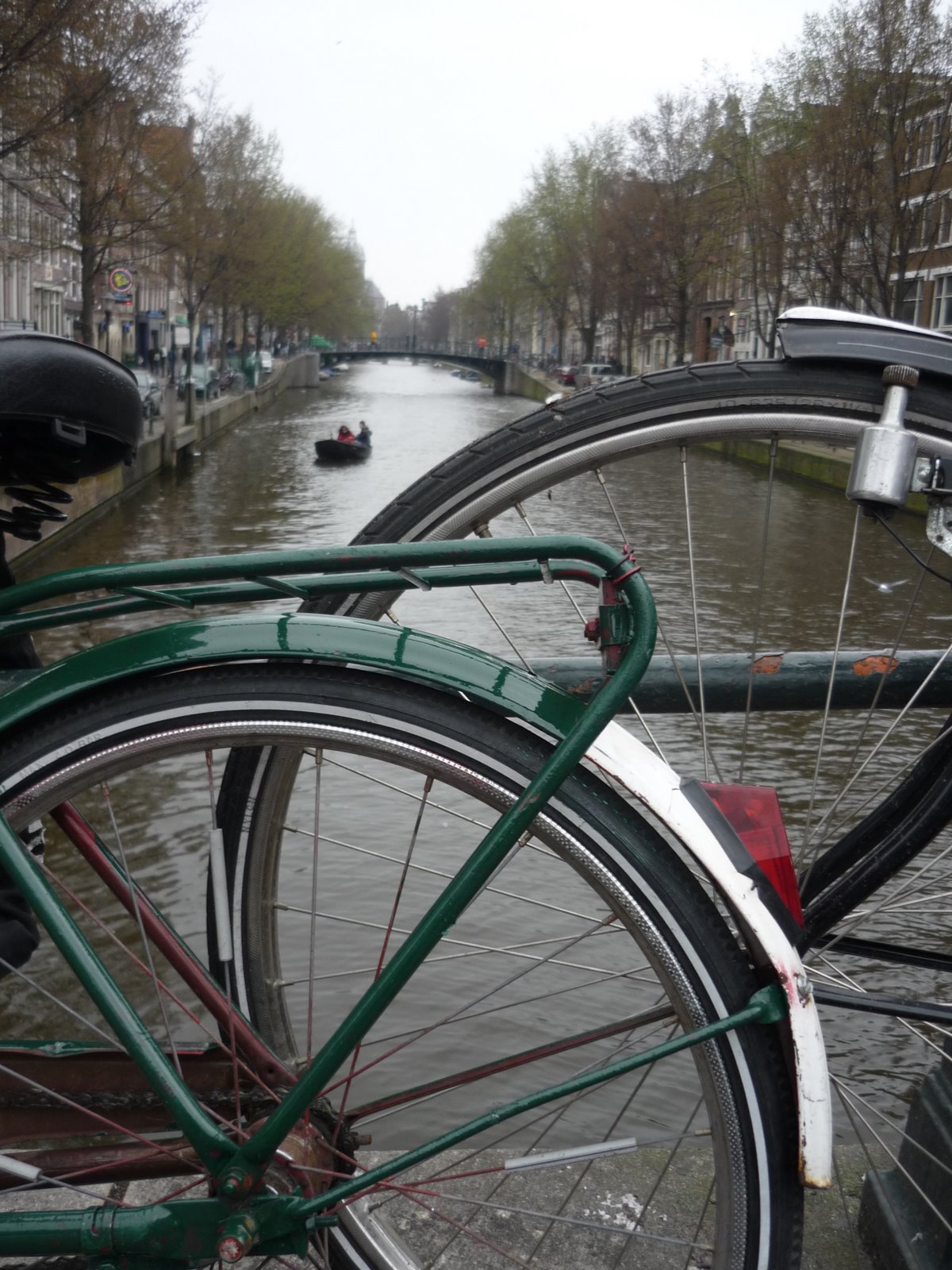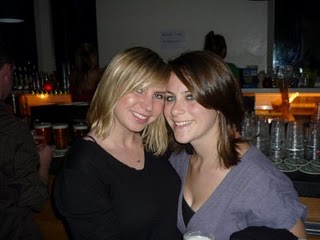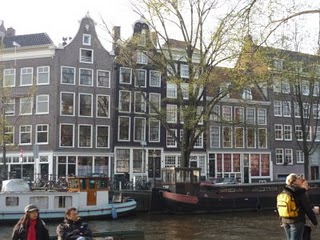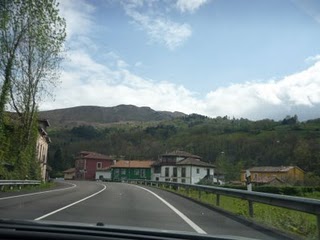
From the Guadalquivir River Valley, the four of us piled into Kike´s 97 Mercedes Elegance and drove north through the Sierra Morena, stopping in a village called Monesterio to fuel up. Extremadura is like the outback – sweeping plains of cork trees underneath a blue sky crowded with clouds straight out of the Simpsons. There are goats and pigs and sheep everywhere, as the region is famous for their meat and cheese products. In fact, there isn´t much more on menus here!
We arrived to Salamanca after about four hours, a beautiful town made from sandstone and home to Spain´s first university. Kike studied for a year here, and bought himself a nice meal at a restaurant called Dulcinea, right off the main square, right after receiving his measly paycheck. We waited nearly an hour for a table in the teeny and tightly packed dining room, then walked through the city. I had been here once during my study abroad course, so we quickly breezed through the cobblestone streets of the city past the cathedral, Casa de las Conchas, the university and the main square, considered one of the most beautiful in Spain.
Soon we were back on the road again, over the central plateau and through towns with just a church and a few excuses for buildings. This is the Spain I fell in love with – small, red buildings surrounded by absolutely nothing. Broken down, forlorn. But soon we were traveling through the mountains of León, through a rainstorm and past jagged cliffs that plunged into a large lake.
We reached Oviedo, the capital of Asturias, after sundown. It seems like the second you hit the northern provinces of Spain that line the Cantabrian Sea, everything is green and hilly. The truth is that Spain is really mountainous, and it gets a lot of rain (except for Sevilla, which is flat and dry). Oviedo was one of the first capitals of Spain because of its proximity to both the mountains that protect it and the sea just 10 miles to the north (Asturias is also one of the smallest states).
Our hotel, named for the second king of Spain who was killed by a bear during a hunting excursion, was right off Calle Uria, one of the main drags. The center of the city is small enough that it merited a quick visit the following day, but we concentrated our efforts on the sidra trail. Northern Spain has a reputation for producing some of the finest apple cider in the country. It’s fermented and poured by a waiter who raises his arm and tilts the glass below. As one could imagine, a lot of cider ends up on the floor! You only get a small quantity in your glass, which must be drank quickly in order to preserve the flavor. We pretty much were taking shots all night, a kind of Spanish version of power hour. We also ate – get this – sea urchins and a type of snail native to the Cantabrian that you eat with a nail. Yes, a nail. These Spaniards are crazy.
After the quick tour through the center, we were back on the road to a town called Infiesto. Alfredo’s uncle and his family live there in a town with one long street next to a creek surrounded by hills. It’s quite picturesque. In search of fabada, the fabled Asturian bean dish that I LOVE, we drove through several small towns through winding roads, past farms and herreros. We finally ended up at a restaurant with fabada and tortu, a flat corn tortilla with pig guts and a fried egg on top. Alfredo’s aunt gave us the names of places we should hit along the way, so we drove along a coastal highway through poor little villages, past the cliffs that plunged into the sea, in and out of little towns faster than imaginable on the two-lane highway.
We stopped in one small town called Niembro. We had to take a country road past a wide river, past the town’s forlorn cemetery and Kike’s poor car climbed to the top of the village on steep roads. We nicknamed the town “Mataninos” or the child killer because the roads were barely wide enough for his car, and we didn’t see any children. At the top of the hill, there’s a wide park with views on both sides of a beautiful beach and the Cantabrian Sea. It was breathtaking.
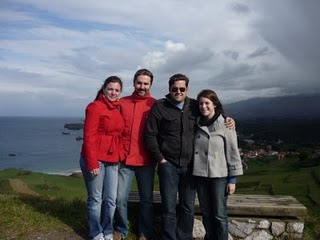
On the drive down, barely dodging other cars, we stopped in the town of Llanes for a coffee. The town has medieval roots and a nice seaside park. I drove us back to our destination for the night, Cagas de Onis, a village in the foothills of the Picos de Europa mountain range. the town is located on the river Sella and a menacing stone, Roman bridge meets you at the entrance to the town. It’s even more beautiful than any other place we’d seen. We spent the night eating and drinking cider.
The next morning, we got up early to drive into Picos de Europa to the Lagos de Covadonga. The highway closes off during busy tourist weeks because the mountain roads are dangerous. We arrived shortly before it closed, ensuring we could see two glacial lakes at the top. The mountains were still covered with snow and we had to hike a long ways up, but, like many things, it was worth seeing the entire mountain range and the lakes.
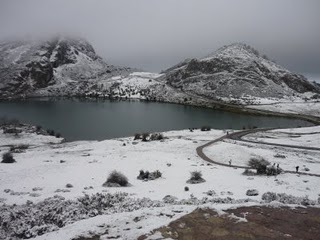
On the way down, we stopped at a monastery built at Covadonga. Legend has it that the Virgen appeared here to Don Pelayo when the Moors were conquering Spain in the late 8th century. Because of the mountains, the Moors captured just about every part of Iberia except the small patch of Asturias. The Virgen told him and his men to reconquer Spain, which is what they did (it just took 700 years). There’s a small chapel in the cave where she appeared and an enormous church and monastery across the valley. The fog was coming down from the mountains, making the monastery shrouded by the time we left.
We headed to Gijon for the afternoon, the biggest city in Asturias. It’s very regal and laid-back, and we had a beautiful afternoon to walk around the marina and the city center and the beach. After lunch outdoors of more sea urchins and chicken, we had a nap and had dinner at a Michelin-rated restaurant. The food was amazing, the service was horrendous. We got a wheel of cheese, more vígaros and a few bottles of sidra before resting up for the long drive back.
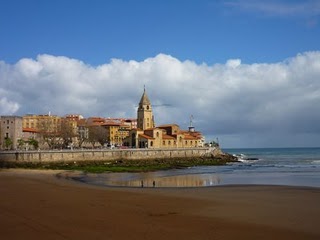
And it was back down to Sevilla and back to school. Nine more hours, countless losses of radio coverage and a bocadillo de lomo. And severely cramped legs.

